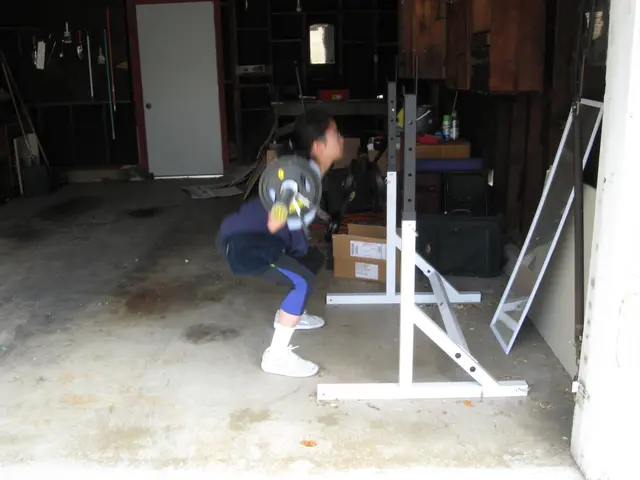Chordoma Exploration: Manifestations, origins, treatments, and further insights
Chordoma is a rare, slow-growing malignant tumor that primarily affects the spine and skull bones, making up less than 1% of all cancers[1]. This article aims to provide an overview of the common symptoms, causes, diagnosis, and treatment options for this unique cancer.
Common Symptoms
Symptoms of chordoma can vary depending on the tumor's location and size but often start subtely due to the slow growth and local invasiveness of the tumor[2]. Common symptoms include:
- Pain in the affected area (spine or skull base)[1][2]
- Neurological changes such as weakness in limbs, changes in facial sensation or movement, difficulty swallowing, or changes in bladder/bowel function[1]
- Headache and vision problems like double or blurred vision, especially in skull-base chordomas (clival chordomas)[1][5]
- Changes in voice, speech, or swallowing if the tumor grows large[1]
Causes
The exact cause of chordoma is unknown. It is believed to arise from notochordal remnants during development[1][3]. It is more common in adults than in children[1].
Diagnosis
Diagnosis typically involves imaging techniques such as MRI and CT scans to assess tumor size, location, and bone involvement. X-rays may be used to evaluate bone damage[1][3]. If MRI and CT scans indicate the presence of chordoma, a biopsy is performed to confirm the diagnosis[1].
Treatment Options
Treatment requires a multidisciplinary approach:
- Surgical resection to remove as much of the tumor as possible is the primary treatment[1][3].
- Radiation therapy follows surgery to kill residual tumor cells, reduce recurrence risk, and improve survival. Aggressive radiation is often needed due to difficulty in complete surgical removal[1][3].
- Chemotherapy is generally less effective but may be used in advanced cases to slow tumor progression[1].
- Targeted molecular therapies are emerging treatments aimed at specific cancer pathways and show promise for chordomas[1].
Because chordomas are difficult to treat and can be life-threatening, specialized follow-up and management at experienced centers are important[1].
In some cases, chordoma tumors may return after surgical treatment, with tumors along the length of the spine having a greater risk of returning than those at the base of the spine. Imaging tests such as MRI and CT scans are typically used to examine areas along the spine suspected of chordoma[1].
About 80% of individuals with chordoma have a genetic variation in a gene responsible for spinal development[1]. Approximately 1 in 1 million people receive a chordoma diagnosis each year[1]. Ongoing studies may provide more insight into why some people develop chordoma and others do not[1].
A 2019 study found that the 10-year survival rate was 58% for people who received surgery alone and 73% for those who received surgery and radiation[1]. Chordoma is a slow-growing cancer that typically affects older adults[1]. Tumors growing near the base of the skull may cause headaches, vision issues, and difficulty swallowing[1].
In summary, chordoma presents with pain and neurological symptoms varying by tumor location, is caused by notochord remnants with unknown exact triggers, and is primarily treated by surgery and radiation, with additional therapies in advanced cases. It is essential to seek specialized care for chordoma due to its rarity and the challenges in treating it effectively.
- The slow-growing malignant tumor, chordoma, primarily affects bones in the spine and skull, and is a unique type of cancer.
- A common symptom of chordoma is pain in the affected area, either the spine or skull base.
- Neurological changes, such as weakness in limbs, changes in facial sensation or movement, difficulty swallowing, or changes in bladder/bowel function, are also common symptoms of chordoma.
- Targeted molecular therapies, which aim at specific cancer pathways, are emerging treatment options for chordoma and show promise for improving survival rates.




